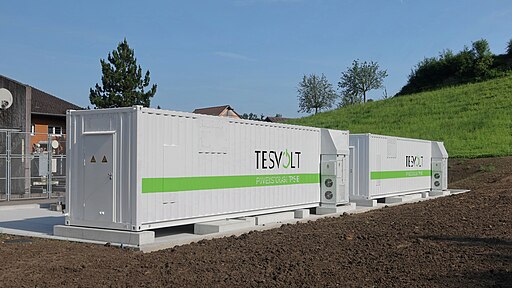Batteries & Energy Storage

Battery storage is a critical technology that supports wind, solar, and other intermittent sources of energy. There are two major categories of battery storage, differing primarily in their capacity. Utility-scale batteries are generally housed in standard steel containers, making them easy to transport and install on-site. A typical unit might have a capacity of about 4 megawatt-hours (mWh), enough to power about 140 houses for a day.
Residential batteries are much smaller, and are intended both to store daytime power for overnight, and to serve as backups in case of a power failure. And owners of home systems can band together using an app to create a “virtual power plant”, earning income to offset the original costs (more on our Electric Power Grid page).
There are other ways to store energy, as well, such as by heating rock or other highly-dense material, which can then be used to create steam to generate electricity. Another is to use gravity, pumping water or moving heavy weights uphill and recovering energy on the way down. None of these methods have been deployed at large scale. And all energy storage technologies, including batteries, involve losses on the round-trip.
Further Reading
- Used EV batteries hooked up to solar farms may be key to long-term storage needs — Canary News 08-06-25
- Massachusetts’ Town’s Batteries Boost the Grid and Power Schools During Outages — Canary Media
- Israeli Company Uses Hot Rocks to Store Electricity to Create Steam — Canary Media 08-26-24
- U.S. startup Will Use Superheated bricks to Store Energy for Industry — Canary Media 08-26-24
- Learn about Battery Energy Storage Systems — Canary media — 06-11-24
- Seven Questions to Ask before You Buy a Home Battery — Canary Media — 06-13-24
